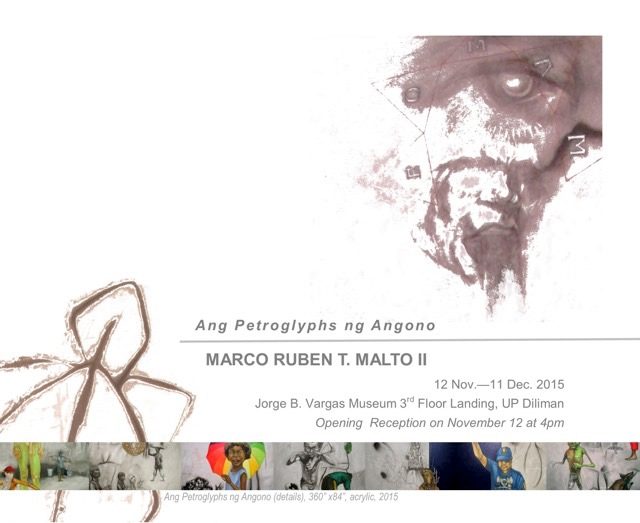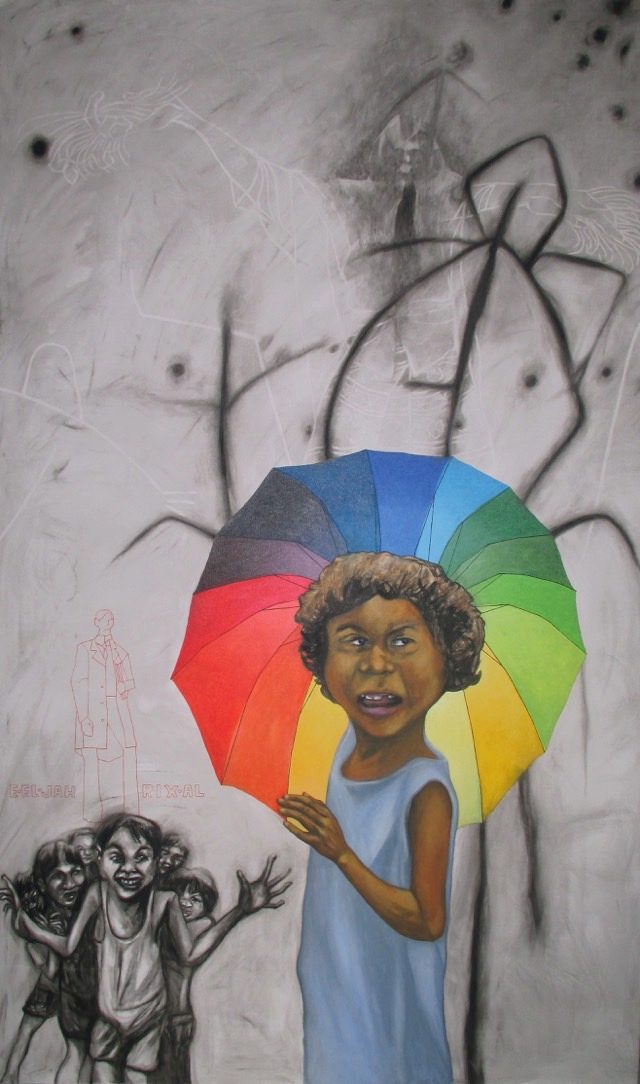SUMMARY
This is AI generated summarization, which may have errors. For context, always refer to the full article.

This is a press release from the Vargas Musuem.
MANILA, Philippines -The symbolic representations of the Angono Petroglyphs can be a narrative about parental love, and faith in the supernatural. And the frequently-described frog-like image in the cave engravings can be that of an infant trying to stretch out from a fetal position. Efforts to preserve and promote the archeological treasure often involve demystifying the 127 discernible figures carved across the 167-meter rock shelter found in Binangonan, Rizal. These late-Neolithic cave engravings, either of anthropomorphic or zoomorphic forms, have gained considerable recognition since their discovery by National Artist Carlos “Botong” Francisco in 1965. But such appreciation has not necessarily translated into sufficient support to preserve this National Cultural Treasure.

In “Ang Petroglyphs ng Angono”, artist and University of the Philippines Fine Arts professor Marco Ruben T. Malto II exhibits his representation of the endangered engravings, which opens on Nov. 12, 4pm at the UP Vargas Museum. Panel paintings simulating the Angono Petroglyphs provide the backdrop for the artist’s interpretation of the etched linear outlines by referencing historical and current political and social images in the country. The artist weaves his own representation of the supernatural explanations about the rock engravings as he continues to explore the talisman as an art theme.
In one theory proffered by Filipino archeologist-anthropologist Jesus Peralta, parents with sick children could have carved the symbols on the rock to “transfer” an infant’s illness onto the pumice canvas about 3,000 years ago. The desperate parents may have resorted to “sympathetic magic” to pass on the ailments of their children to something else through a ritual; the high infant mortality rate in the community during the time may have initiated the repeatedly drawn image on the 25-meter long and 3-meter deep portion of the rock wall. Sympathetic magic theorist Sir George James Frazer offers two varieties of this concept: one relies on “similarity,” and the other relies on “contact.” In the first principle, the magician infers that one can produce any desired effect merely by imitating it; in the second, the magician infers that whatever one does to a material object will affect equally the person with whom the object was once in contact, whether it formed part of one’s body or not. By carving like-images of their children, the parents may have practiced their belief in the healing potential of sympathetic magic.
Amid significant research, documentation and other efforts, this exhibit is but one attempt by the artist to promote more public interest in the Angono Petroglyphs with the hope of securing more support to preserve the archaeological heritage. And whether through “similarity” or “contact”, the artist may well be attempting his own form of sympathetic magic to mend some ailments of the Philippine society through symbolic imageries on the large-scale painting.
About the artist
Marco Ruben T. Malto II is a graduate of the UP Diliman College of Fine Arts (UPCFA) in 1993; finishing his Master of Fine Arts, also at UPCFA, in 2002. An Assistant Professor and a former Department Chair at the UPCFA-Department of Studio Arts, Malto’s fascination with rock art was inspired by his stay in Namibia in 2007. Following his exploration of the pre-historic African rock engravings, Malto initiated and designed a set of stamps to commemorate the Twyfelfontein Petroglyphs — Namibia’s first UNESCO World Heritage Site; the stamps were launched and issued in Namibia in 2008. – Rappler.com
Ang Petroglyphs ng Angono by Marco Ruben T. Malto II will run from Nov. 12- Dec. 11, 2015 at the UP Vargas Museum 3rd Floor Landing. Museum hours are from 9am to 5pm, Tue-Sat.
Add a comment
How does this make you feel?
There are no comments yet. Add your comment to start the conversation.